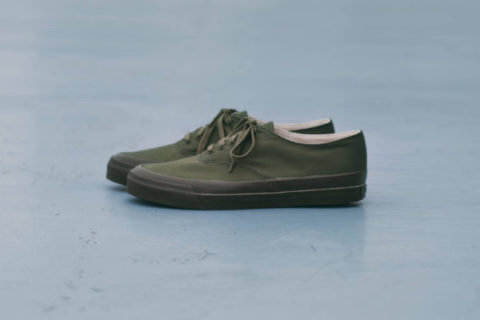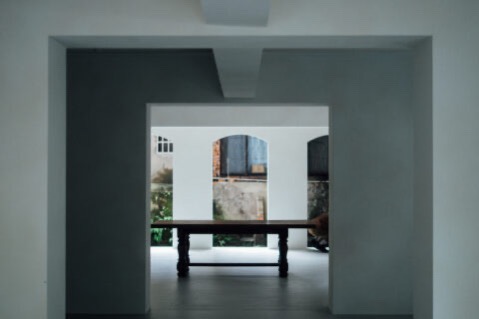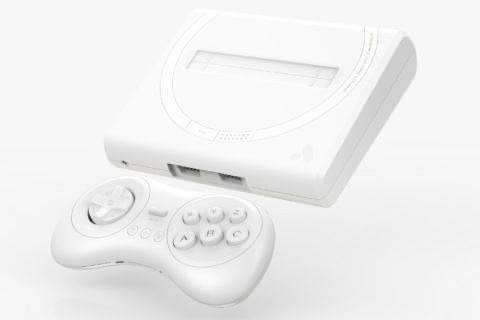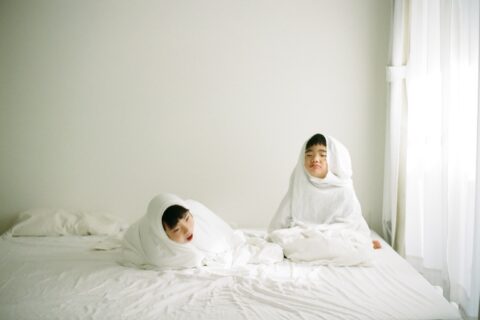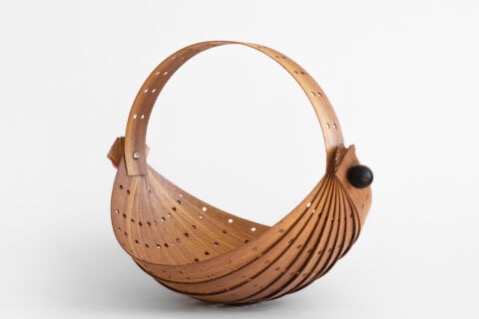
長谷川良子扭動著手腕:「雖然即使成為老婆婆了,仍想繼續這工作,但還得看看這手到時管不管用。」造鞋看似是很輕巧的工作,只是坐在案頭前,一針一線在皮革上穿來插來,但要製造出堅固耐用的鞋子,拉扯蠟線時需要很大的力度,長久下來,不免造成身體的負擔。不過除了這手部的職業病以外,這工作還給予長谷川小姐無比的快樂。
Ryoko Hasegawa was circling her wrists as she said, “I’d love to keep on doing my job even when I’ve become old, but it all depends on how flexible my hands will be until then.” The physical demands of shoemaking are sometimes underestimated. In fact, to produce a solid pair of shoes, it actually involves a great deal of strength pulling threads through the leather; the repetitive action could eventually put an excessive burden on the body. Despite the potential occupational strain, shoemaking still brings Hasegawa tremendous happiness.
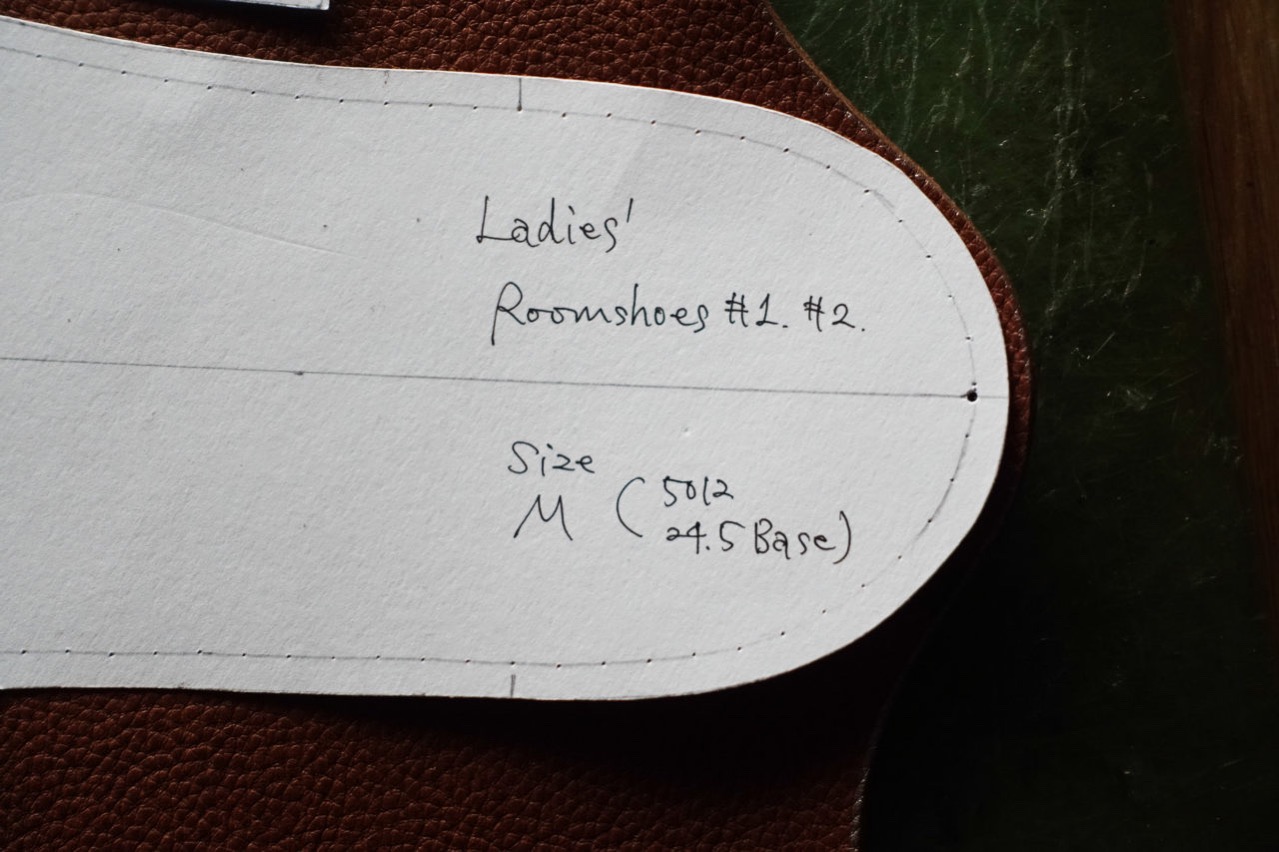
長谷川小姐今年48歲,她是在於35歲時才學始學習造鞋的,在這之前,她曾任空中服務員,也與朋友開過花店。婚後與丈夫旅居德國,在語境截然不同的國度裡,即使英語再靈光,仍然表達不出心中所想。在德國的時光裡,她感到自己不斷吸收,卻無處釋放。或許正因為無意識的壓抑,教她回國後有更強烈創作的衝動。生了孩子後,她報讀了造鞋興趣班,想不到這正是她終生職業的入口。「後來跟丈夫分開,我獨力扶養年幼的孩子,希望能找到一份工作,讓我可以長留在他身邊,我想到的,就是造鞋了。」
她離開了興趣班,進入了職業訓練學校,以往都是用老師預備好的材料,她只需要打洞穿線就完成了,而在學校裡,設計及鞋底構造等都認真學習,對她來說,最難的工序是畫紙樣。要把立體想像成平面再不差一毫地繪畫出來,不經過多次造樣及調節,總是無法完成。
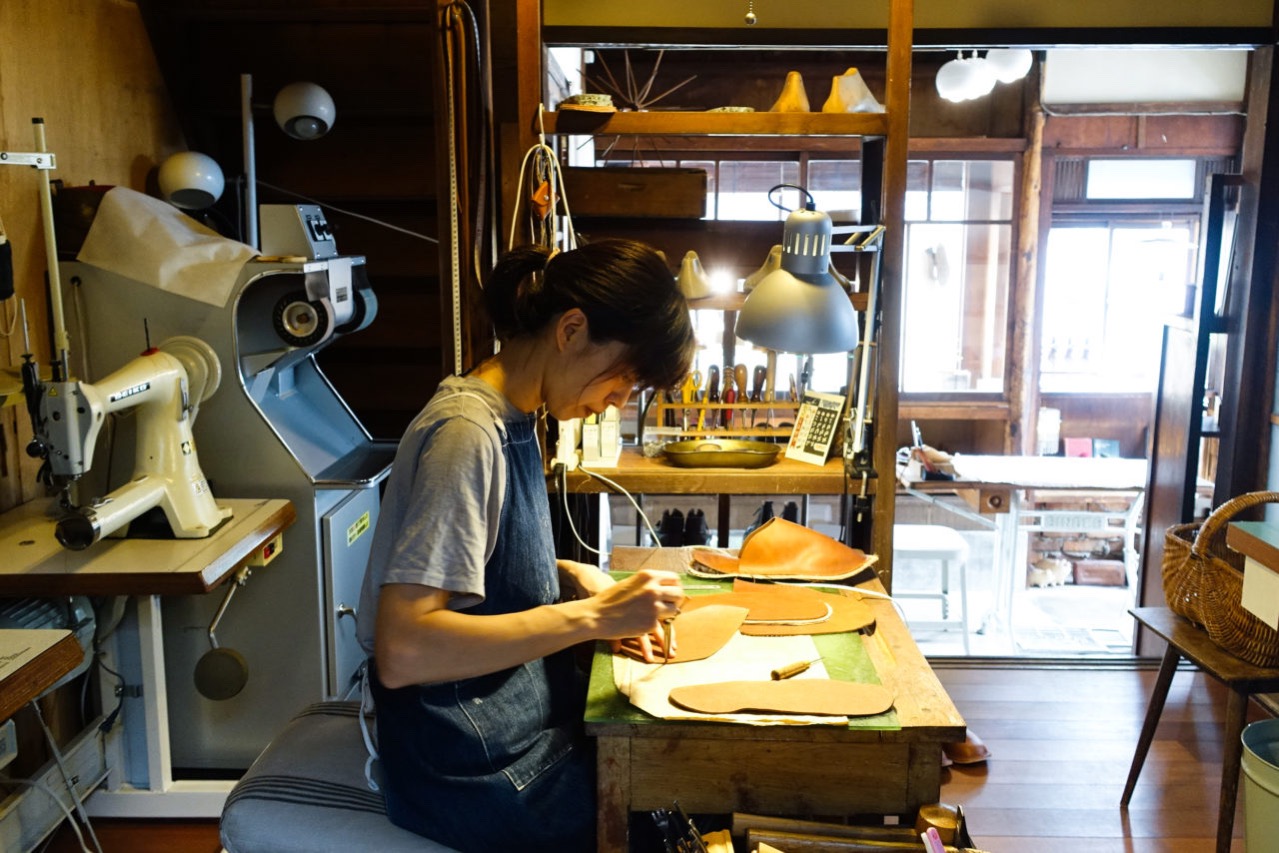
Hasegawa is now 48 years old. She only began to learn to make shoes at the age of 35. Before that, she had been a flight attendant and also had once opened a flower shop with a friend. After getting married, she went with her husband to sojourn in Germany, where the language barrier didn’t really allow her to fully express her mind. During her days in Germany, she had an utmost feeling of absorbing too much than she could discharge — it was perhaps this suppression that gave her a strong urge to create after she returned to Japan. After giving birth to her child, she signed up for a shoemaking workshop. Little did she know that would become her lifelong occupation. “After divorcing my husband, I have to raise the child alone. I was hoping to get a job where I can spend most of my time being with him. Shoemaking became an easy solution.”
She then left the workshop and entered a vocational training school, where she could no longer conveniently rely on the materials prepared by the workshop tutor; the skills she needed to learn are no longer as simple as punching holes and pulling threads. The school taught her all the necessary knowledge including designing and even the structure of shoe sole. To her, the most challenging part is pattern making, a process that requires extreme precision to translate a three-dimensional concept into a sketch on paper. After numerous attempts and adjustment, she still couldn’t really get it right.
2009年,她已在神奈川縣成立了自己首個品牌Waldweg,但2011年當她遷到東京都,仍邊工作邊跑到夜間學校去,目的就是把自己沒信心的工序學好。「那時兒子才小學三年級,上課的日子我總是晚上11時才回到家。有時我會托母親代為照顧,母親不方便時,他便很努力地獨自留在家裡,自己熱了晚餐,自己一個人吃,一個人洗澡,一個人睡覺。我回到家時會見到他和小狗躺在床上沉睡,撫摩他的頭髮,告訴自己:要加油!」
現時長谷川小姐的工房設於京都北野天滿宮附近,二樓休息室的窗外樹影婆娑,午後陽光溫暖,難怪她去年對此一見鍾情,決定自東京青梅市遷到這古都來。「青梅市是鄉郊地區,附近的村民很關照我,訂單也算多,但我希望到一個能多接觸不同人的地方。」2016年時她正式移居,並把品牌的名字改為Growold。店裡除了手造的鞋是新的,其他布置都是她在各處搜來的舊物——皮鞋的木模、展示櫃、桌子⋯⋯而我猜想,她也正期待著自己造的鞋子在某戶人家裡,變舊變老。
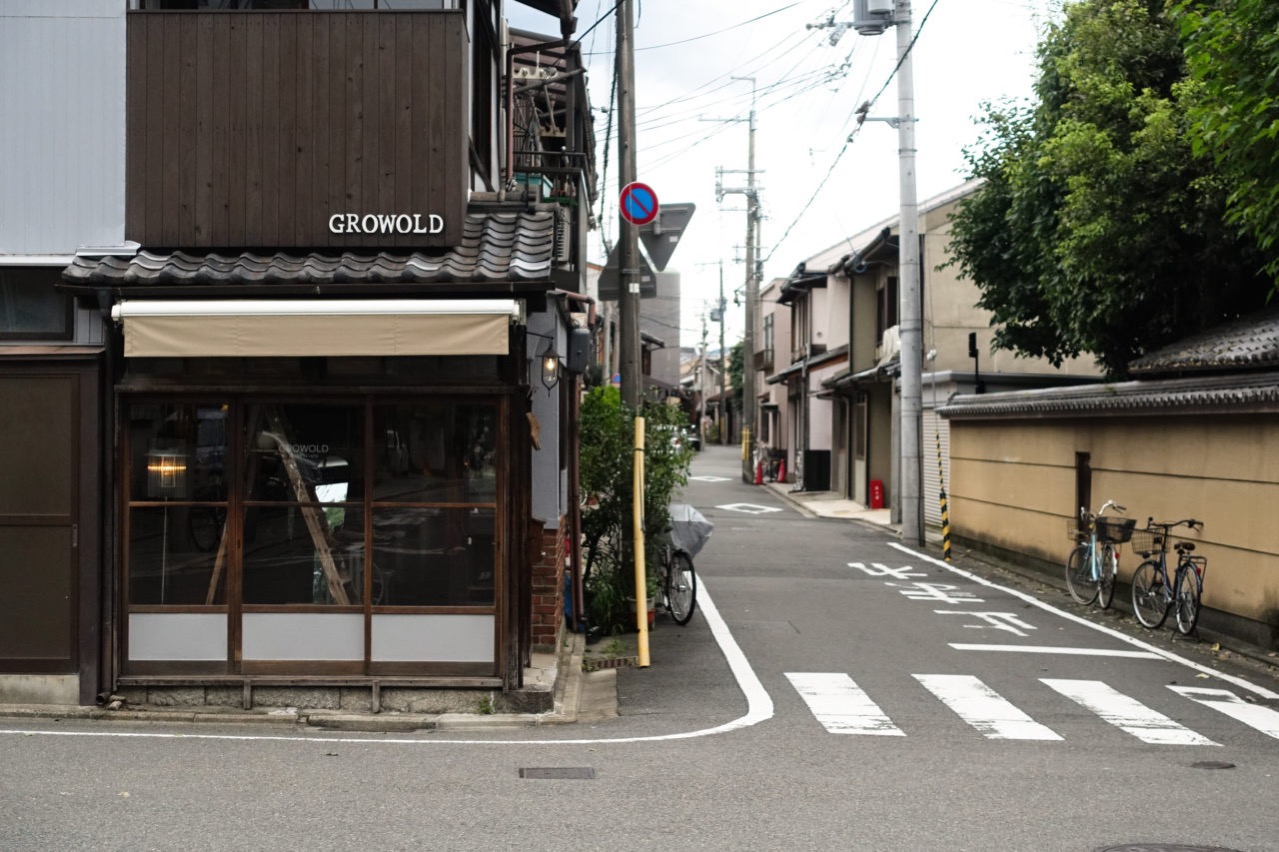
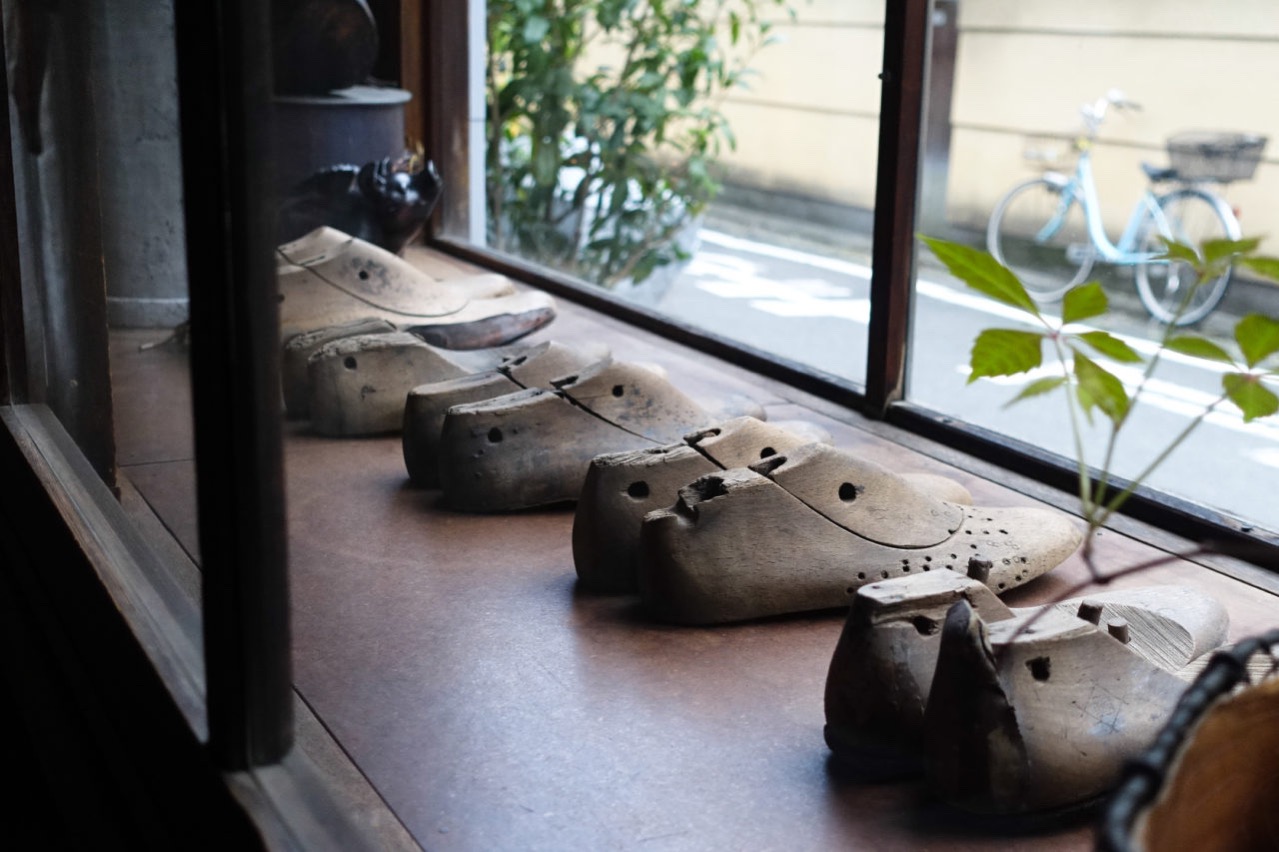
In 2009, she already established her first brand Waldweg in Kanagawa Prefecture. After moving the business to Tokyo in 2011, she was working during the day and attending class during evening time to sharpen her skills in the weaker area. “My child was only in his third grade then. When there were classes, I could only return home by 11 at night. Sometimes my mother would help out to babysit, but when she couldn’t, my child would need to take care of his own self. He’d prepare his dinner and eat alone. He bathed himself and had to go to bed all alone. When I return home, I’d see him sleeping with the puppy in bed. I’d stroke his hair and tell myself, I have to make it!”
Hasegawa now owns a studio near Kitano Tenmangu in Kyoto. On the second floor is a living room where she can enjoy a view of shadows of trees outside of the window and bathe in the warm sun. It was pretty natural for Hasegawa to fall in love with this place at first sight and decided to move to this historic city from Ome in Tokyo. “Ome is in the country side, villagers from the community were all very kind to me. The amount of orders I received was fairly good, but I just wished to move to a new place where I could encounter a greater diversity of people.” She officially relocated in 2016 and rebranded her business to Growold. In her shop, the shoes she made are the only new things she has; the rest of the decorations and equipments are vintage items she collected from around the world, such as the wooden shoe molds, display case, table, etc. I guess it should be her wish to see the shoes she made growing old with their new owners.
從神奈川到東京至京都,不同的地方為長谷川小姐帶來了不同的客人。神奈川近海,人們愛穿著涼鞋於沙灘散步,東京的青梅市近山,於是大部分人找她造的都是穿梭山野的鞋子,至於極度注重禮儀的京都,沒幾個人穿著涼鞋出門,於是以造靴及皮鞋的客人為主。地方不同,客人不同,所製作也不同,但長谷川小姐卻有著同樣的執著,希望鞋子能跟客人一起成長,相親相依。因此她堅持使用對人體無害的植物鞣製皮革,設計追求平實耐看。
在Growold的網站上,長谷川小姐如此寫道:「長久使用後為皮革添上質感。時間在皮革上刻上表情。『一直在一起的東西』,因此得舒適、耐用、不教生厭、不強迫、與生活貼近⋯(中略)。就跟人與人的關係同樣,人與物的關係也不一定恒常,注入感情這既古怪又溫暖的元素,物件便隨之改變。溺愛著、馬虎對待著、保持著距離、重新審視⋯⋯然而還是希望它在身邊,任歲月在它身上滑過。」
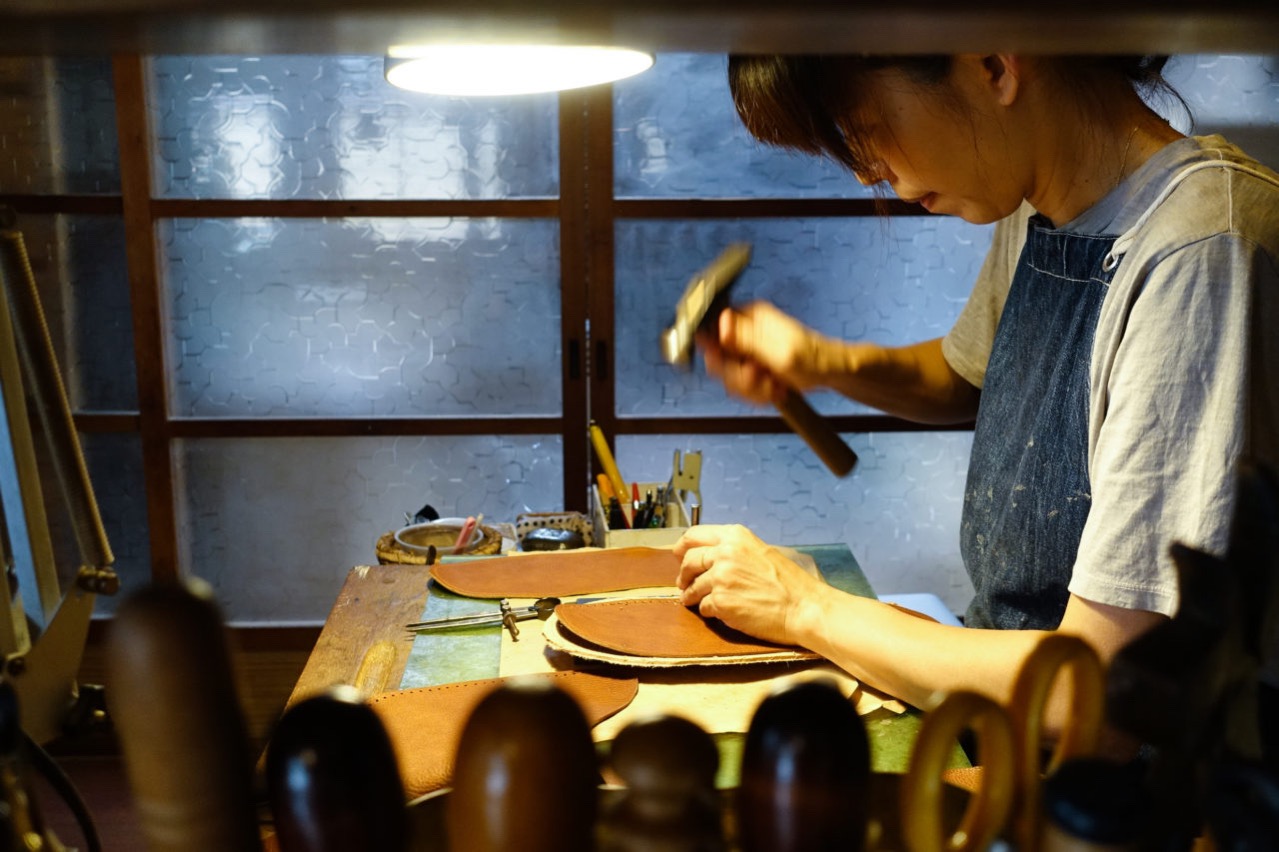
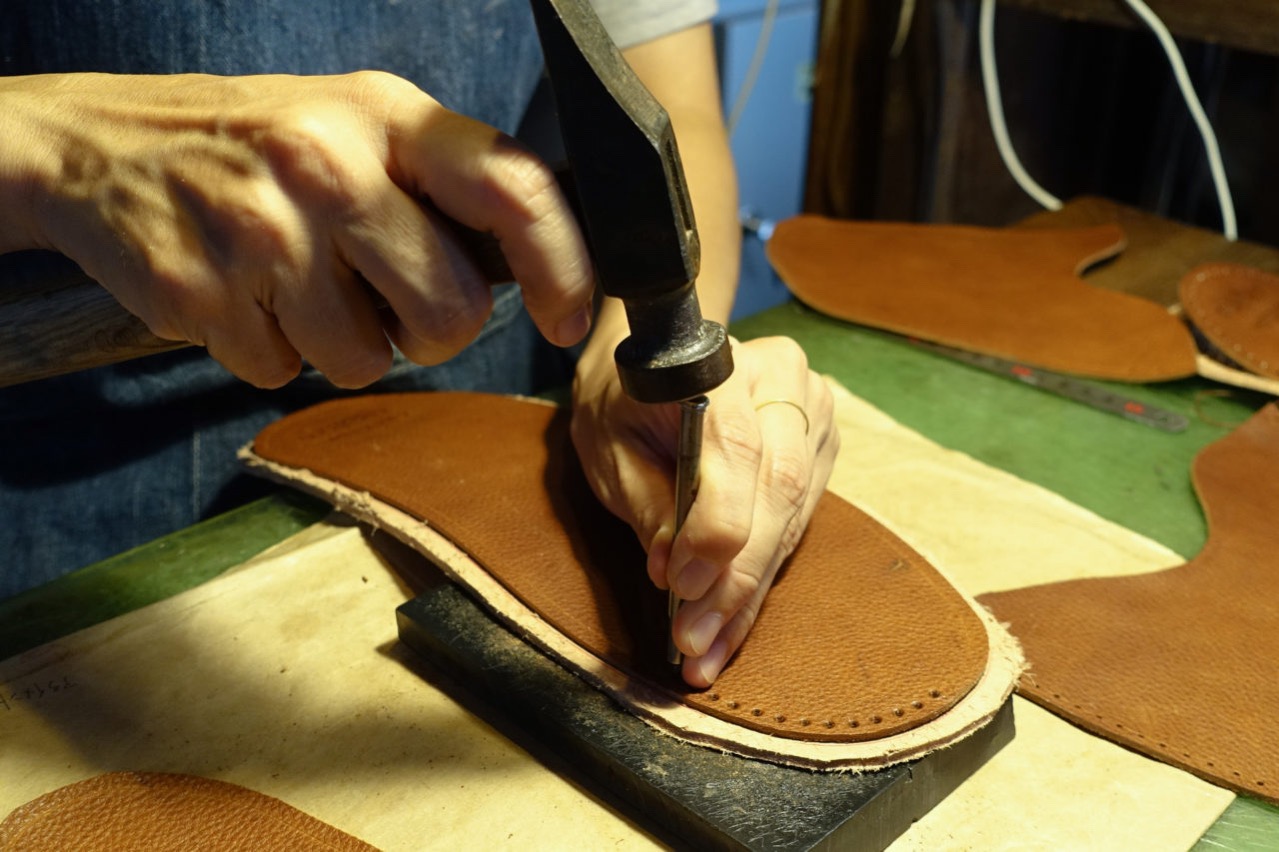
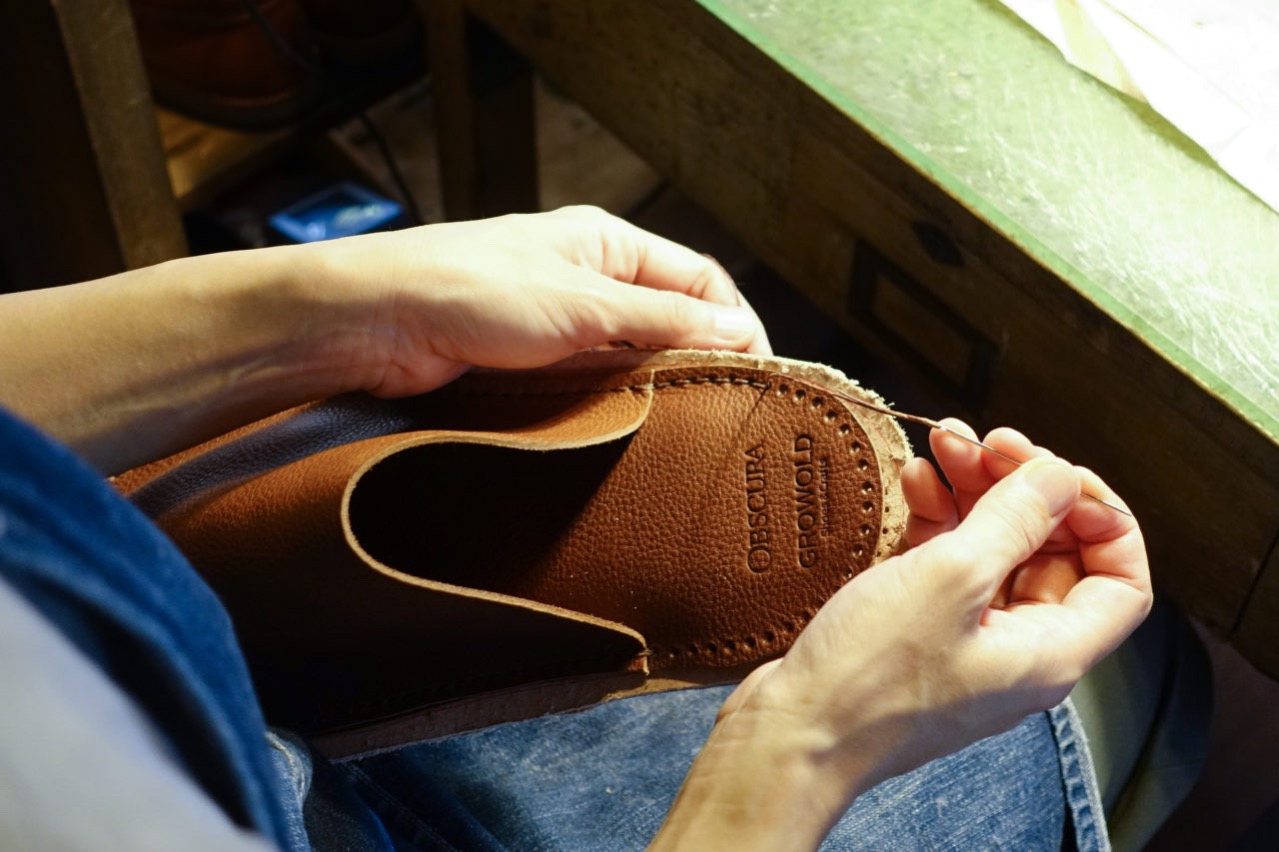
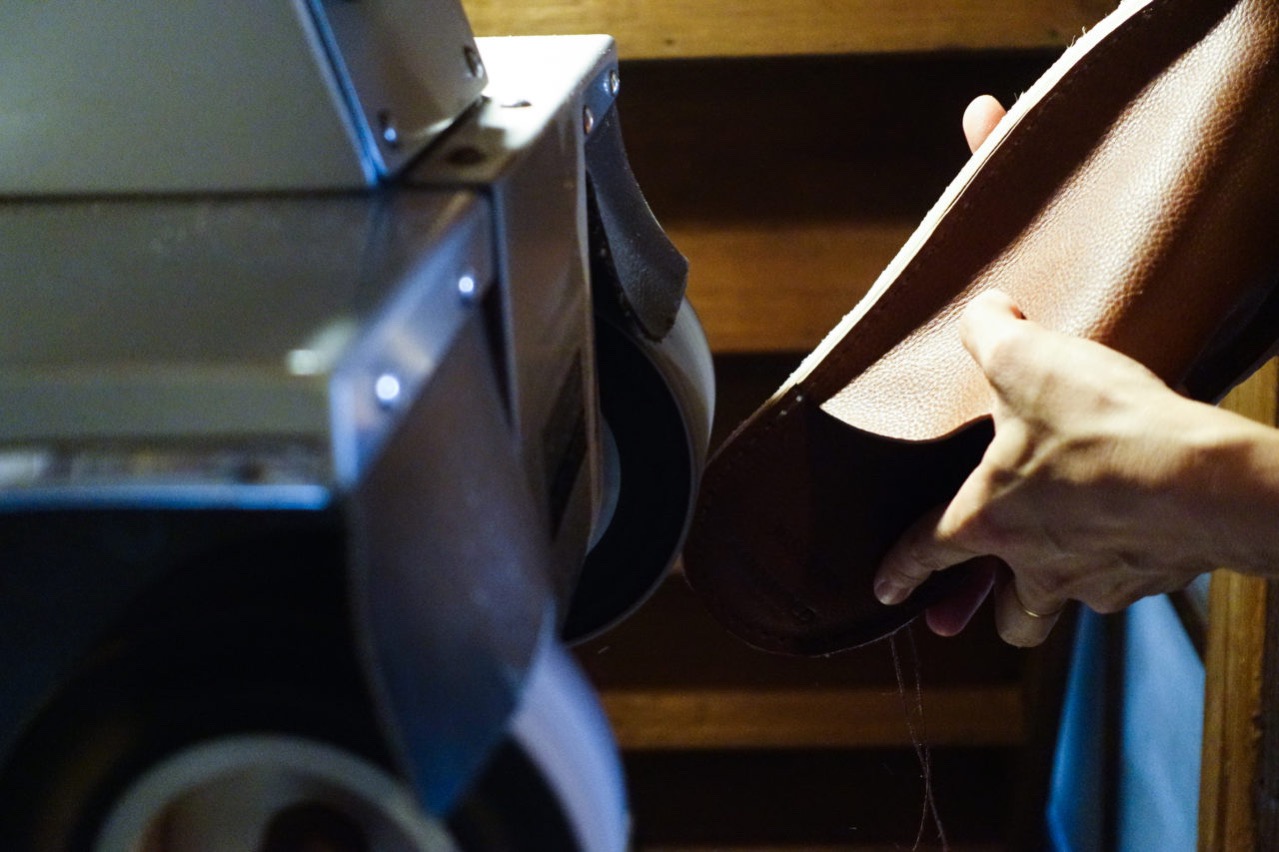
From Kanagawa to Tokyo, Tokyo to Kyoto, different locations have brought along different types of customers. People from Kanagawa love to wear sandals to stroll on the beaches dotted along the long coastline. People from Ome love to order trekking shoes for the hilly landscape. People from Kyoto, where etiquette is stressed, rarely wear sandals outside but usually come to order boots and brogues. The productions have to adapt to different demands, but they all share Hasegawa’s persistence to make shoes that can age with the owners. For this very reason, she insists to only use the harm-free vegetables-tanned leathers, and go after clean and classic designs that never go out of style.
On Growold’s website, Hasegawa writes, “Our leather shoes age gracefully as you wear them and become a bearer of the trace of time. Our shoes are comfortable, durable with an appealing style, and are good companions for your daily life. […] No relationship is meant to last forever, but affection can change the tune of an object. You could treat the shoes with excessive love, or you could have a subtle distance with them; regardless of your attitude towards shoes, we always wish you would keep them for life and allow them to grow old with you.”
人生經歷了那麼多起起落落,今天的長谷川小姐仍然笑容滿面,樂觀豁逹,大概正因為她走過那些歷練,她製作的鞋子才會有如此內歛而溫柔的表情。
OBSCURA與長谷川良子合作推出特別版Room Shoes,現時已於OBSCURA Online Shop上發售。
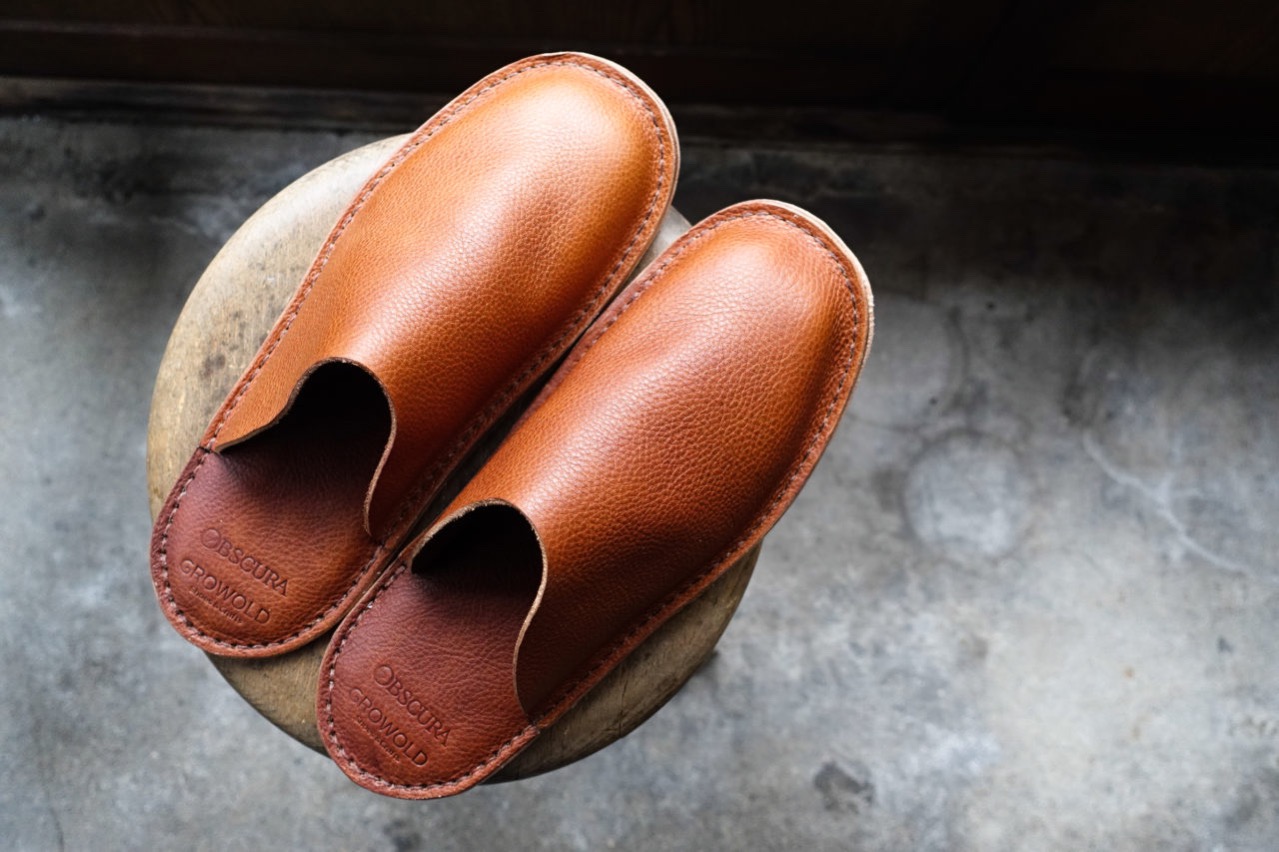
Having experienced a series of highs and lows in life, today, Hasegawa is still wearing a bright cheerful smile on her face. Perhaps it is the life challenges she’s been through that gives her shoes a subtly tender poise.
OBSCURA and Ryoko Hasegawa have teamed up to create a special edition of the Room Shoes, which are now for sale on OBSCURA Online Shop.
